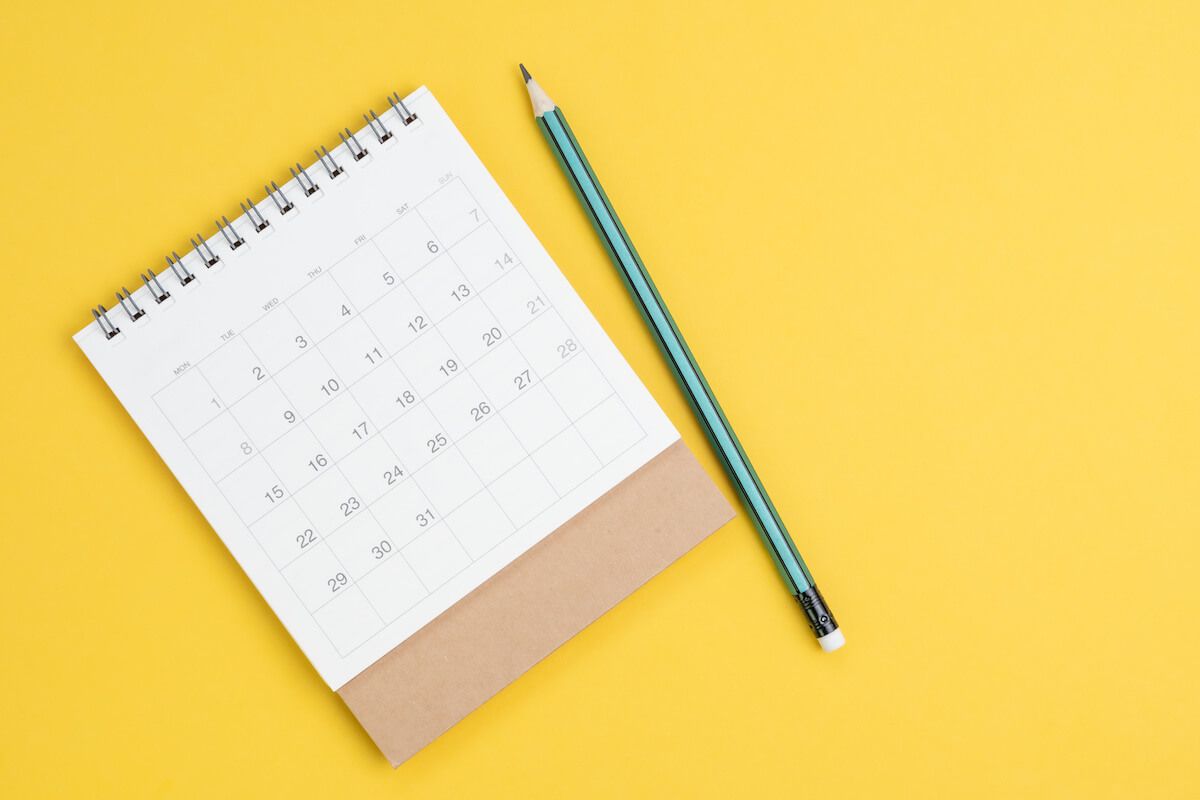Have you ever sat down to write a research paper for school, a report for work, or blog posts for your website, and poof — your mind went blank?
It can be tough to get started when you sit down to write, whether for school, work, or fun. You may have a lot of ideas floating around in your head but no clear sense of how to put them all together. That's where organization comes in.
Information organization is essential for writers. Whether you‘re writing creative fiction novels or the information architecture of web pages, organizing is a necessary step in the writing process. Using a framework allows us to sort our thoughts, identify the key points we want to convey, and arrange the piece in a structure that will flow logically and compellingly.
If you want to strengthen your writing and produce compelling pieces that flow every time, this guide is for you. Explore what organizing means for writers, why it's important, and seven methods of organizing information that you can try to create your best writing yet.
We're all familiar with organizing — we use it to keep our homes tidy, plan a road vacation, and complete work projects. Everything around us is specifically arranged naturally or artificially, from the shelves of your local market to the self-organized fairy circles in Australia. As essential as organization is for order in our world, it's equally crucial to create order in our writing.
Proper organization begins with a framework — after all, it's not really organizing if there’s no method to how you're sorting things. Many forms of organization are found in everyday life, from sparking joy with Marie Kondo to the Dewey Decimal Classification system at the library.
But what about organizing digital notes, research bibliographies, or even abstract thoughts and ideas?
Many academic greats have formulated frameworks and systems for organizing information. Information design forefather Richard Saul Wurman developed the "Five Hat Racks," also known as the LATCH system. LATCH is an acronym for:
According to Wurman, LATCH is the only method for organizing any kind of information, regardless of the form or amount of information. In his book "Information Architects," Wurman says, "I've tried a thousand times to find other ways to organize, but I always end up using one of these five."
Wurman, in essence, condensed our instinctual tendency to group things into categories that are logical for categorization. His method is the foundation for many other methods.
The Inverted Pyramid method, for example, is constructed based on the principle of hierarchy. This reporting style emphasizes the story's who, when, where, why, and how, starting with the most essential facts and presenting them in decreasing order.

In the same way that journalists use the Inverted Pyramid structure when writing news stories and press releases, writers also need an organizational style.
In any piece of writing, organization is a crucial factor that determines its effectiveness. Without a clear organizational pattern, your audience could become confused and lose interest.
You can organize your writing by using your critical thinking skills to view your writing from your reader's perspective. Here are a few questions you may want to consider:
Knowing your reader will allow you to write so that it makes sense to them. For example, someone reading an instruction manual looking for specific directions to fix their bicycle is unlikely to read an introductory paragraph about your biking adventures. The vast majority of users will skip straight to the piece of information they need. If they have to wade through a large amount of information, they will likely go to another resource.
On the other hand, let’s say you're writing a casual blog article for expectant mothers to describe what to expect during childbirth. An approach with optimism and relatable stories that leads to the big moment will be better appreciated than a blunt timeline laced with sometimes-scary medical jargon.

ABLE - the next-level all-in-one knowledge acquisition and productivity tool.
Learn moreAlthough some writers can produce flawless pieces seemingly effortlessly, most need to plan their writing ahead of time. In addition to structuring our thoughts and setting clear objectives, it's essential to organize the content to ensure that the message is as focused as possible.
You can structure your writing in many ways. Some writers use worksheets or templates, and others organize using an outline or other framework. Certain formats are best suited for specific purposes, so it’s helpful to be familiar with a few. Here are seven proven methods for organizing your next writing project.

Chronological order is probably the most straightforward form of organization, as it simply involves ordering information by time. In this format, each section or paragraph builds on the previous one. Stories, biographies, and historical accounts are often written using this method.
The method is effective because readers can easily follow and process information in the order it is presented. It can also create a feeling of anticipation or suspense, as readers are eager to discover what happens next.
To use the chronological method of organizing information, simply arrange the points you want to discuss according to their order in time. It might be helpful to group events together by decades or centuries if your piece covers an extended period.
The order of importance is another popular method for organizing information and is often used for essays, speeches, and other persuasive writing. In this type of organization, you arrange your main points from most important to least important, or vice versa.
This method effectively makes a convincing argument, allowing you to start strong with your best points and end with a bang. By gradually increasing the intensity of your language, you can also stir up emotion in your reader.
To use the order of importance method, first decide which points are the most crucial to your argument or message. You can then arrange them in whatever order you feel will have the most impact. Just make sure you begin and end with your strongest points.
The spatial method of organization is often used for descriptions, whether it be of a person, place, or thing. In this type of writing, you arrange your information according to how it appears in space. This could be from left to right, top to bottom, or even in a circle.
The key to using the spatial method successfully is to be as straightforward as possible in your writing. You want your reader to be able to easily visualize what you are describing, so use plenty of concrete details and images.
To use the spatial method, start by brainstorming the points you want to include in your description. You can then arrange them in the most appropriate order for the subject matter. For example, if you describe a room, you would probably start with the walls and move on to the floor, furniture, and other features.
The compare and contrast method is just as it sounds — you compare and contrast two or more subjects — to highlight the similarities and differences between two ideas, people, or things. This method is sometimes used with the goal of the reader choosing one or the other subject, but sometimes the purpose is simply to educate.
This method of organization can be particularly effective in persuading your reader to see a topic in a new light. It can also help clarify your thoughts on a subject by forcing you to consider it from multiple angles.
To use the compare and contrast method, identify what is similar and what is different between your subjects, and create a list of all the relevant matters you want to include. Once you have your list, decide how to present your points. You can alternate between similarities and differences or group them together by relatedness.

The problem and solution method of organization consists of two sections, a description of the problem and an explanation of the solution. Arguments and persuasive pieces frequently use this format to demonstrate problem-solving skills and show why a particular course of action is best.
The purpose of this method is to provide the reader with plausible evidence to influence their opinion or behavior. You can gain their trust by showing your reader that you are aware of their problems and have credible solutions.
To use this method, first identify the problem you want to discuss and detail the issues. In a new section, present the solution and explain how it can be implemented. Be sure to provide details and supporting evidence for your claims.
The cause and effect method focuses on the reasons for and the results of a given topic. This type of organization is commonly used to simplify the process of explaining complicated concepts and events, using one section to detail the cause and another to describe the effect. This highlights the key relationships between the two concisely and logically.
Using this method is an effective way to incite action because it clearly shows the direct impact of your subject. The technique can also be used to support predictions of what may happen in the future based on past events. Many find this approach helpful in making decisions, as it can provide a clear and logical path forward.
To use the cause and effect method of organizing information, determine what caused the problem or situation. Then examine the results. You can then structure your writing in one of two ways:
The sequential method structures your writing by presenting information in a step-by-step fashion. This method is often used for instructions or manuals, as it can provide clear and concise directions. It can also be used to build anticipation by gradually revealing information.
This method is effective in helping readers understand complex processes by breaking them down into smaller, more manageable pieces. It can also help to ensure that your instructions are followed correctly, as each step builds on the last.
To use the sequential method:
A thorough look at methods of writing organization deserves a nod at the topical approach, which is often the method used when nothing else quite fits. Interestingly, it's also the method that is often used in academic and informational writing, as it allows you to explore a topic in depth.
The topical method begins with brainstorming the points you would like to cover during your discussion. Create an outline based on the topic and type of information, ordering it as you see fit. When writing an academic or scientific report, the structure consists of four parts — an executive summary, an introduction, a body, and a conclusion. Finally, conduct any necessary research and write your content for each section.

Highlight, annotate or take notes from anywhere, and it's easily linked to a selected topic in your Knowledge Base. Forget about trying to "find it again" - it's all at your fingertips, meaningfully organized in one app.
Learn moreOne of the best ways to ensure that your reader understands your writing is to structure clear and concise information. These seven methods of organizing information will help keep your work organized. But remember that organization is only one piece of the writing puzzle.
The key to good writing is fitting the pieces together to make the most of the end goal — how the reader responds to it. Whether you want your reader to walk away with knowledge or tears in their eyes, how your readers react to your work will ultimately determine your writing success.
I hope you have enjoyed reading this article. Feel free to share, recommend and connect 🙏
Connect with me on Twitter 👉 https://twitter.com/iamborisv
And follow Able's journey on Twitter: https://twitter.com/meet_able
And subscribe to our newsletter to read more valuable articles before it gets published on our blog.
Now we're building a Discord community of like-minded people, and we would be honoured and delighted to see you there.